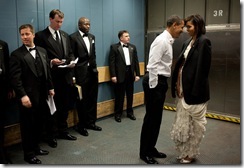
From left: Peter Handcock and Harry ‘Breaker’ Morant just prior to their deaths, and surgeon Johnson, Frederick Hunt and Englishmen Alfred Taylor and Henry Picton. Photo: Archives
Lieutenant Harry “Breaker” Morant moments before he was executed by a British military firing squad. February 27, 1902.
ALONG with Ned Kelly’s famous last words, ”Such is life”, The Breaker’s final sentence remains one of Australia’s most defining quotes. It was delivered less than 14 months after Federation, as Harry ”Breaker” Morant and fellow lieutenant Peter Joseph Handcock were executed by a British military system that ignored Australia’s newly won sovereignty.
The federal government responded by passing the Defence Act, which ensured no Australian soldier could be executed in similar circumstances. It was an important step in establishing true international independence.
The Breaker Morant case is shrouded in political expediency, cynical pragmatism and a cover-up involving the destruction of key legal documents, including court-martial transcripts.
Rest in Peace?
On his return to Africa in April 1901, Lieutenant Morant enlisted with the newly formed Bushveldt Carbineers, a mainly Australian force raised in South Africa, to fight the Boers in Northern Transvaal on their own terms. No unit was more feared by the Boers than the Bushveldt Carbineers. On August 5, 1901, Capt. Hunt and 17 Carbineers rushed a Boer farmhouse and were surprised to find four times as many Boers as expected. During the attack both Capain Hunt and Sergeant Eland were killed.
According to a witness and corroborated by others, Hunt, who was only wounded, was killed and mutilated, his neck broken, his face stamped upon with hob-nailed boots and his legs slashed with a knife. His body had also been stripped completely of clothes. An enraged and grieving Morant exacted his revenge by executing Visser, a Boer found wearing Hunt’s clothes, and some other Boer prisoners. A German missionary named Hesse was also killed after Morant had suspicions about his motives in speaking with Boer prisoners.
Seven Carbineers, including Lieutenants Morant, thirty years old Peter Joseph Handcock and twenty-seven years old George Ramsdale Witton, were charged with shooting Boer prisoners and the German missionary. Major Thomas, an inexperienced Australian lawyer from Tenterfield, New South Wales, was appointed to defend the Australians. The court-martial began in January 1902. Morant showed nothing but contempt for his judges and accusers. He freely admitted shooting the Boers and justified his actions on the ground that Kitchener himself had given instructions that no prisoners were to be taken. During the court proceedings, the Boers attacked Pietersburg where the trial was being held. The accused men fought bravely and the Boer attack was defeated. It made no difference to the outcome of the trial. The three Australians were found guilty of the murders of the Boers but were acquitted of the murder of the German missionary. Morant and Handcock’s death sentences were signed by Lord Kitchener on 4 February 1902. George Ramsdale Witton’s death sentence was reduced to life in prison.
Game to the last, Morant and Hancock refused to be blindfolded and went before the firing squad at the old Pretoria gaol, Pietersburg in the early morning of 27 February 1902. Hancock’s wife, who lived in Bathurst with her three children, only found out from the newspapers that her husband had been shot. Kitchener later admitted, in writing, that he had issued orders to kill Boers wearing English uniforms!! George Ramsdale Witton went to prison on the Isle of Wight, and after serving nearly three years, his life sentence was overturned by the British House of Commons on August 11, 1905. In 1907, Lieutenant George Ramsdale Witton published his book Scapegoats of the Empire: The True Story of Breaker Morant’s Bushveldt Carbineers (Sydney: Angus and Robertson Publishers, 1907; ISBN: 0207146667; December 1982). A new edition was published in 2004 and the book is now available to read online at The Australian Boer War Memorial. Very few copies of the 1907 edition exist today because, according to one story, the Australian Government considered that its contents could implicate Lord Kitchener and had all copies seized. His biography may be read online at Lieutenant George Witton: Ancestor Details
“The Bushveldt Carbineers and the Pietersburg Light Horse”
by William Woolmore

Lieutenant George Ramsdale Witton
Lieutenants Morant, Handcock and George Ramsdale Witton were charged with shooting or instigating others to shoot eight Boers on 23 August 1901. The “eight Boers” court martial began on 3 February 1902. The facts were generally not disputed by the defence. Lieutenant George Ramsdale Witton’s statement reads as follows:
“I had received my commission as a Lieutenant about six weeks before the 23rd August. I was told what the orders about Boers were as received from Captain Hunt, and I took it they were correct; I did whatever I was told, and raised no objection one way or the other, as it is customary to obey orders.
Captain Hunt and Lieutenant Morant were great friends, and I supposed that all orders were correct that Captain Hunt gave. He was greatly relied upon by all when he came to reform matters at Spelonken, after Captain Robertson left.
On 23rd August one of the Boers rushed at me to seize my carbine, and I shot at him to keep him off.”









